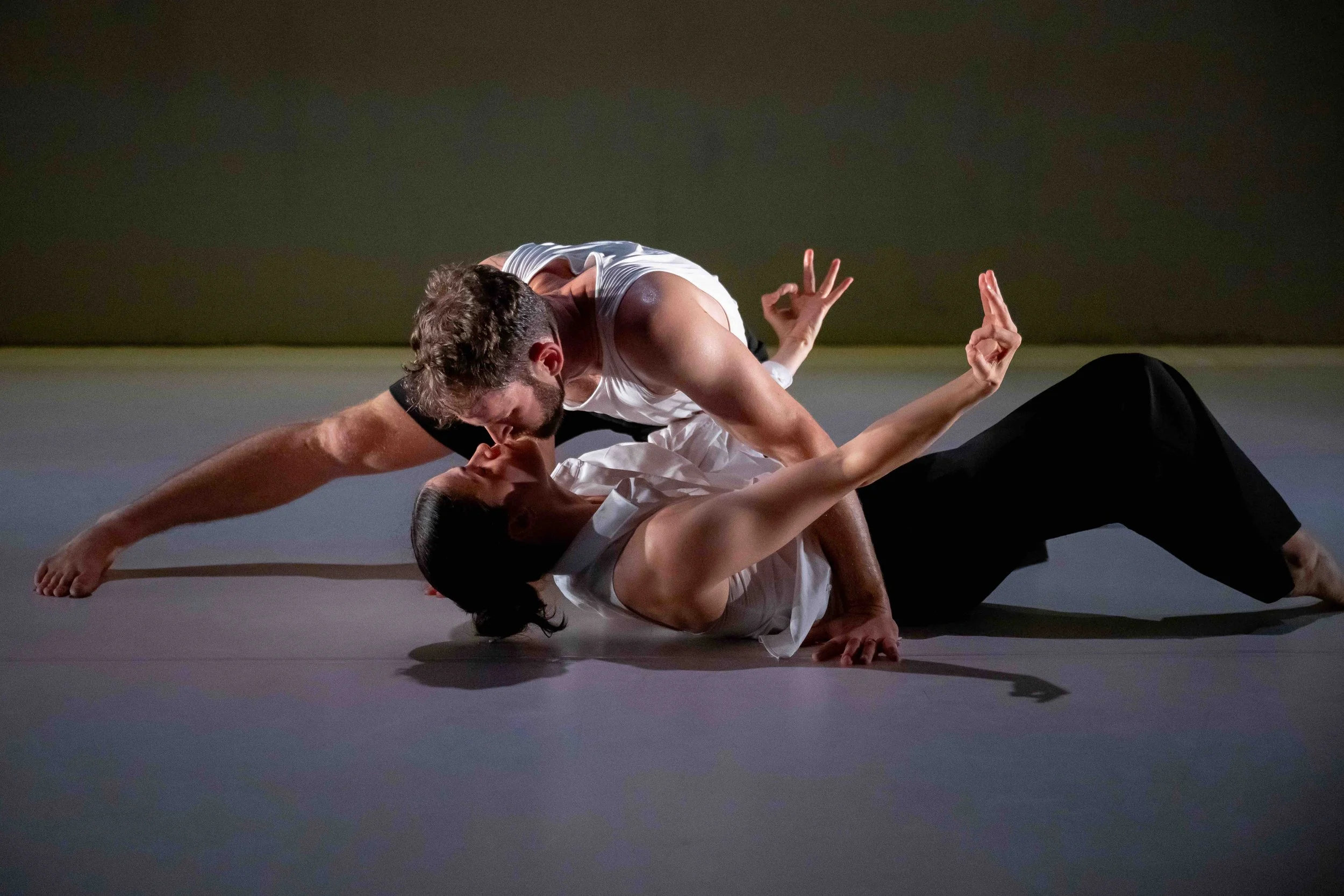Unearthly costumes help dance artist Emmalena Fredriksson conjure dreamlike worlds
At Dancing on the Edge, new Soft Palate incorporates sculptural fabric headpieces, while Ecdysis features an LED-glowing exoskeleton
Soft Palate. Photo by Luciana Freire D'Anunciação
Dancing on the Edge and SFU Woodward's Cultural Programs present Emmalena Fredriksson’s Soft Palate and Ecdysis at SFU Woodward’s Goldcorp Centre for the Arts on July 12 and 13
CHOREOGRAPHER EMMALENA Fredriksson was blown away when she first saw the headpieces that costume designer Alaia Hamer had created for her new work Soft Palate.
One of the sculptural white fabric creations swirls up into a giant funnel that hoods the face; another resembles the spikes of a sci-fi sea urchin; and then there’s the piece that looks like it’s bubbling up over the dancer’s head. All of the origami-like structures pull up to mask the lower part of the face.
“I was like, ‘Wow, what are these things?’” Fredriksson tells Stir on a break from rehearsals, describing her reaction in Hamer’s studio. “It was just so exciting, because it was like nothing I had ever seen before.”
Somehow, the designer had distilled all the imagery Fredriksson had assembled in her mind and on a vision board. Those included the subconscious-inspired works of early-20th-century painter Hilma Klimt; the through-the-looking-glass world of Alice in Wonderland; post-pandemic concepts of nesting and burrowing in a soft textural space; and themes around dreams and dream logic.
Ecdysis. Photo by Luciana Freire D'Anunciação
“I told her I wanted to transform the whole room—I wanted the costume to extend into the room,” the Swedish-born, Vancouver-based choreographer tells Stir. “I was interested in the body being sort of attached to the space. I was like, ‘Can we make something where the body changes the room, but also where the face coverings are part of the world?’”
Hamer went off to her studio, diving into the labour-intensive process of traditional Japanese textile shaping techniques. And when the dancers and the choreographer started working with the final headpieces in the studio, the costumes immediately started influencing the way the performers would move. Fredriksson, who is performing Soft Palate with Hayley Gawthrop and Jessica Keeling, says it became immediately clear who would wear which of the different pieces. “We explored how it made us feel wearing these and how could we distort our bodies in relation to these things,” Fredriksson says. “There were beautiful explorations that came out of material and the costume.”
At Dancing on the Edge, Soft Palate shares a double bill with Fredriksson’s comparatively hard and technological Ecdysis. In the solo, the dance artist wears a glowing, LED-lit-spine exoskeleton, looking like an otherworldly cyborg. The work explores gender and power, identity, and questions around whether she’s human, animal or machine.
Both works grew out of intense interdisciplinary collaborations—not just with costume designer Hamer, but with lighting designer Kyla Gardiner and the spine technology by Bob Pritchard and Daniel Tsuii in Ecdysis. In both cases, the costumes and other design elements were integrated early in the process—an approach that has long worked for the artist, who has her MFA from SFU’s interdisciplinary-minded School for the Contemporary arts.
“I'm very interested in the meeting of other art forms,” Fredriksson says. “I’m curious, also, about what the body is and how we can picture the body in different ways. What identity is: that’s a larger question that I grapple with.”
Traditionally in contemporary dance, costumes come late in the choreographic process. “Here it’s the other way around, where we develop a concept together,” the artist explains. “So the sense of design is there from the beginning and maybe also it acts like a little bit of a limitation or an obstruction that shapes the body.”
But, for those who witness the unearthly creatures in Soft Palate and Ecdysis at Dancing on the Edge this week, there are clearly not any “limitation” to the worlds Fredriksson and her collaborators can conjure.














